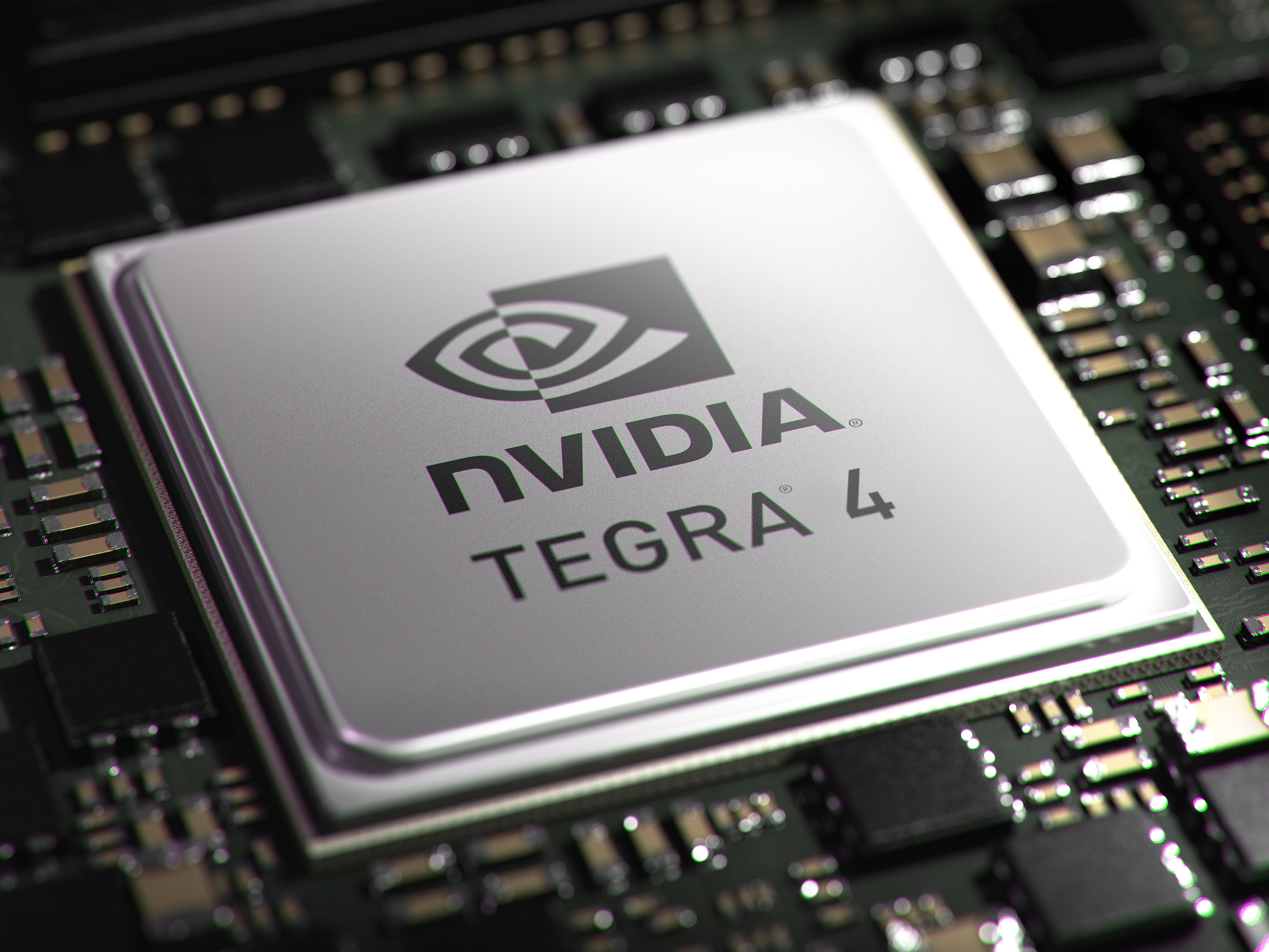Nvidia: Tegra 4 Devices Will Be Announced This Quarter
Nvidia CEO Jen-Hsun Huang said on Thursday during the company's quarterly earnings call that tablets using the company's new Tegra 4 quad-core SoC are currently in development, and other devices will be announced this quarter. More Tegra 4-based products will hit the market throughout the second half of the year.
"Outside of phones, where we see these new computing devices becoming like entry-level PCs, performance matters," Huang said.
We already know the company's handheld gaming console, Project Shield, features the new chip. Other devices in the works using the new SoC include the HP SlateBook 10 x2 10-inch tablet, the HP Slate 21 AIO, a "super phone" from ZTE and the Toshiba AT10LE-A. Project Shield will likely be the first to arrive although various reports claim the initial device will be Toshiba's AT10LE-A instead.
Nvidia revealed the new quad-core chip back in January during CES 2013, featuring four Cortex-A15 CPU cores clocked at 1.9 GHz, a fifth battery saver core for processing low performance applications, and 72 custom GPU cores that support a 3200 x 2000 LED displays and Ultra HD video via HDMI. The chip succeeds the Tegra 3 which is based on a Cortex-A9 design.
As for the more mainstream Tegra 4i, devices based on this chip will be available as soon as the second half of 2013, pending carrier certification. This SoC features four Cortex-A9 r4 CPU cores, a fifth battery saver core and 60 custom GPU cores supporting a 1920 x 1200 LCD screen and 1080P video via HDMI. However unlike the Tegra 4, this chip has an integrated software-defined i500 LTE modem.
For the quarter ending April 28, Nvidia posted revenue of $954.7 million and net profit of $77.9 million, up 3.2-percent and 29-percent respectively from the year before. That growth is attributed to increased sales of the company's graphics cards, as Tegra sales declined 22.2-percent while ODMs migrated from Tegra 3 to the newer chips.
Get Tom's Hardware's best news and in-depth reviews, straight to your inbox.

Kevin Parrish has over a decade of experience as a writer, editor, and product tester. His work focused on computer hardware, networking equipment, smartphones, tablets, gaming consoles, and other internet-connected devices. His work has appeared in Tom's Hardware, Tom's Guide, Maximum PC, Digital Trends, Android Authority, How-To Geek, Lifewire, and others.
-
Dupontrocks11 While I like the advancement in CPU technology, I am slightly unnerved by the fact that the market is releasing more SOC's... I would much rather Nvidia just sell these chips to both manufacturers AND consumers.Reply -
teh_chem Tegra4 has taken too long to come to fruition. I know that Nvidia made a statement that they chose certain company/product decisions in order to not have another "tegra 1-3" fiasco by rushing the product. But I think they lost a lot of the device market in the interim which could put them at a disadvantage for whenever T4 comes out.Reply
The other troubling thing is that it sounds like most phones and tablets in the general mobile market are going to be using the Tegra4i, which is using an old ("old") architecture, and is not faster than the Snapdragon S4 pro. The danger with this is that the Snapdragon line will also be undergoing development, and I would be shocked that within a few quarter there isn't something significantly faster than what was released last year, more on-par with the Tegra4.
Competition is great for consumers, but I wouldn't get my hopes up with T4. -
JustSoZen I'm planning on getting a GTX card (maybe 660?) this summer to make my first gaming PC. Does Tegra have any effect on the discrete video card market? Because if so, it might be better to just go with a Radeon card this summer =/Reply -
cknobman Sorry Nvidia I think you may have missed the boat on this round.Reply
You took too long to release Tegra 4 and your previous generations just sucked too badly. Tegra 3 has been needing a replacement for a year now. -
g00fysmiley can'e wait to get real benchmarks of performance in devices... till then it is vaporware, critisized by some, haile dby others... and nobody has a damn clue which one is right.Reply -
renz496 Reply10800985 said:I'm planning on getting a GTX card (maybe 660?) this summer to make my first gaming PC. Does Tegra have any effect on the discrete video card market? Because if so, it might be better to just go with a Radeon card this summer =/
Tegra and GeForce are completely different product. just the same as amd cpu to amd gpu -
renz496 AFAIK any device featuring Tegra 4i won't come out until early next year. Tegra 4i might using much dated Cortex A9 but so far nvidia was clear that they did not aim high end smartphone for the chip. they even specifically mention they are going to compete with the chip small size to compete with other SoC maker in term of price (if i'm not mistaken Tegra 4i is about 60mm2).Reply
maybe it just me but it seems nvidia did not put aggressive push with their tegra 4. i mean there still no real device available with tegra 4 they already talk how superior tegra 5 is like how it will be based on kepler architecture and will have full support for OpenGL 4.3. heck they even show kayla running battlefield 3 just to show what might be possible with Logan (Tegra 5) -
cbfelterbush Reply10800985 said:I'm planning on getting a GTX card (maybe 660?) this summer to make my first gaming PC. Does Tegra have any effect on the discrete video card market? Because if so, it might be better to just go with a Radeon card this summer =/
Well to be fair he asked if the Tegra could have any effect on the market, not if they were the same product. Perhaps answering the question, instead of assuming he doesn't know the difference between a GPU and CPU would be nice.
There could be a slight impact on the discrete GPU market with the release of the Tegra 4. Due in part to the incompatibility between the Nvidia Shield and the Radeon cards. I would suggest you consider the possibility of using the Nvidia Shield with the Rift and a Gnarly LAN party mini box. This requires a GTX 680 performance or better, and it requires Nvidia GPUs. If the three are a great match it could hypothetically increase demand for the Nvidia product. With the imminent release of the 9K series AMD GPUs the 7-series will be found at an even better deal.
So in a way Nvidia continues to charge more for less, and AMD brings even more value to the table. Like I said Slight.
-CB -
renz496 ^heard that nvidia will come around with their 700 series this month but as for amd 9k series they wont come that soon. based on the latest rumor amd expect to use 20nm class process node for their upcoming cards and tsmc 20nm will not be ready until next year at the least.Reply
